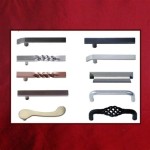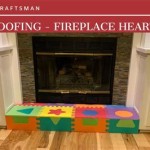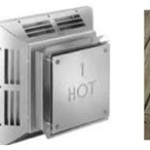Inside Propane Fireplaces: A Comprehensive Look
Propane fireplaces offer an efficient and aesthetically pleasing alternative to traditional wood-burning fireplaces. They provide a controlled and convenient source of heat while replicating the ambiance of a natural fire. Understanding the inner workings of a propane fireplace is crucial for safe operation, maintenance, and troubleshooting. This article delves into the various components and operational mechanisms of propane fireplaces, providing a detailed overview of their design and function.
A propane fireplace operates on the principle of combustion, where propane gas is mixed with air and ignited to produce heat and flames. The overall system is comprised of several key elements working in synergy to achieve safe and reliable performance. These include the gas supply system, the burner assembly, the ignition system, the venting system, and the safety controls. Each component plays a vital role in the fireplace's operation, and understanding their individual functions is essential for maintaining a properly functioning appliance.
The Propane Gas Supply System
The gas supply system is the backbone of any propane fireplace. It provides the fuel necessary for combustion. This system typically begins with a propane tank, which stores the liquid propane under pressure. From the tank, a gas line, usually made of copper or flexible stainless steel, runs to the fireplace. A regulator is installed along the gas line to reduce the high pressure from the tank to a lower, manageable pressure suitable for the fireplace burner. This regulation is essential for consistent and safe flame control.
The regulator is a crucial safety device that prevents over-pressurization of the gas line, which could lead to leaks or even explosions. It maintains a consistent gas pressure, regardless of the level in the propane tank. This ensures that the flame height and heat output remain stable. The gas line then connects to a shut-off valve located near the fireplace. This valve allows for manual interruption of the gas supply for maintenance or in the event of an emergency.
From the shut-off valve, the gas enters the fireplace's internal gas control valve, which is often an electronic valve controlled by the fireplace's control panel or remote. This valve regulates the flow of gas to the burner based on the desired heat setting. These control valves are designed with safety features, such as thermocouple sensors or flame rectification systems, which monitor the presence of a flame and automatically shut off the gas supply if the flame is extinguished. This prevents the accumulation of unburned propane, a significant safety hazard.
The Burner Assembly and Flame Generation
The burner assembly is where the actual combustion process takes place. It's designed to mix propane gas with air in the correct proportions to create a stable and efficient flame. Burners come in various shapes and sizes, depending on the fireplace's design and desired heat output. Common burner types include linear burners, log set burners, and ribbon burners. Linear burners produce a long, straight flame, while log set burners are designed to mimic the appearance of burning wood.
Regardless of the burner type, the basic principle remains the same: propane gas is injected into the burner chamber through small orifices or ports. As the gas enters the chamber, it mixes with air drawn in through vents or air inlets. The burner design influences the air-to-fuel ratio, which directly affects the flame's appearance, heat output, and combustion efficiency. Proper air-to-fuel ratio is crucial for clean burning and minimizing the production of soot and carbon monoxide.
Many propane fireplaces use ceramic logs or artificial embers to enhance the realism of the fire. These logs are strategically placed around the burner to distribute heat and create a more natural-looking flame pattern. The logs are made of a heat-resistant material and are designed to withstand high temperatures. They also contribute radiant heat, which adds to the overall warming effect of the fireplace.
The flame itself is a complex chemical reaction between propane and oxygen. The color of the flame is indicative of the temperature and completeness of the combustion process. A blue flame indicates relatively complete combustion, while a yellow or orange flame may suggest incomplete combustion or the presence of impurities. A properly functioning propane fireplace should produce a predominantly blue flame with some yellow or orange tips, indicating efficient and safe operation.
Ignition and Safety Control Systems
The ignition system is responsible for initiating the combustion process. Propane fireplaces utilize different types of ignition systems, including standing pilot ignition, electronic ignition, and intermittent pilot ignition. Standing pilot ignition systems have a small pilot flame that burns continuously, providing a constant source of ignition. This system is simple and reliable but consumes a small amount of propane even when the fireplace is not in use.
Electronic ignition systems use an electronic spark to ignite the propane gas. These systems are more energy-efficient than standing pilot systems because they only ignite the gas when the fireplace is turned on. Electronic ignition systems may use a spark igniter or a hot surface igniter to initiate combustion. Spark igniters generate a high-voltage spark that ignites the gas, while hot surface igniters use a heating element to reach a temperature high enough to ignite the gas.
Intermittent pilot ignition (IPI) systems combine the benefits of both standing pilot and electronic ignition systems. They have a pilot flame that is ignited electronically when the fireplace is turned on and extinguished when the fireplace is turned off. This system is more energy-efficient than a standing pilot system but provides a more reliable ignition source than a purely electronic system.
Safety control systems are paramount in propane fireplaces. These systems are designed to prevent potential hazards such as gas leaks, over-pressurization, and carbon monoxide buildup. A thermocouple or flame rectification system is used to monitor the presence of a flame. If the flame is extinguished, the system automatically shuts off the gas supply to prevent the accumulation of unburned propane.
Another important safety feature is the pressure relief valve, which is designed to vent excess pressure from the gas line in the event of a malfunction. This valve prevents the risk of explosions due to over-pressurization. Carbon monoxide detectors are also recommended for any home with a propane fireplace. These detectors provide an early warning of carbon monoxide buildup, which can be deadly.
Additionally, some propane fireplaces incorporate oxygen depletion sensors (ODS). These sensors measure the oxygen levels in the room and shut off the gas supply if the oxygen levels drop below a safe threshold. This prevents asphyxiation in the event of inadequate ventilation.
Venting System
The venting system is responsible for safely removing combustion byproducts from the fireplace and directing them outside the home. Proper venting is crucial for preventing the buildup of carbon monoxide and other harmful gases. Propane fireplaces typically use direct vent, B-vent, or vent-free systems.
Direct vent systems are the most common and safest type of venting system. They draw combustion air from outside the home and vent exhaust gases directly outside through a sealed pipe. This prevents the mixing of indoor and outdoor air, ensuring that combustion byproducts are not released into the living space. Direct vent systems can be installed horizontally through an exterior wall or vertically through the roof.
B-vent systems use a single-wall or double-wall metal pipe to vent exhaust gases through the roof. They draw combustion air from inside the home, which can lead to a slight reduction in indoor air quality. B-vent systems are typically used for fireplaces that are installed in existing chimneys or flues.
Vent-free systems, also known as ventless fireplaces, do not require a venting system. They are designed to burn propane gas very cleanly, producing minimal amounts of carbon monoxide and other pollutants. However, vent-free fireplaces are not permitted in all jurisdictions and should only be used in well-ventilated areas. They also require the use of an oxygen depletion sensor to ensure that the oxygen levels in the room remain at safe levels.
Regardless of the venting system used, it is essential to ensure that the system is properly installed and maintained. Regular inspections should be performed to check for leaks, obstructions, or damage to the venting components. Improper venting can lead to dangerous carbon monoxide buildup and pose a serious health risk. It is always recommended to consult with a qualified professional for the installation and maintenance of a propane fireplace venting system.
The elements discussed are the core aspects of a propane fireplace's operation. Maintenance and proper installation are key in ensuring functionality and saftey when operating a propane fireplace.

Propane Fireplaces An Economic Fuel

Propane Fireplaces Accessories Your Trusted Partner

Propane Fireplace Inserts Gas Log Sets Tunkhannock Pa Ace Robbins

Propane Fireplaces An Economic Fuel

How Much Propane Does An Indoor Fireplace Use Magikflame

Ventless Gas Fireplace Propane

Propane Fireplaces An Economic Fuel

Gas Fireplace Inserts Quick Install New Propane Usage

Propane Fireplace Maintenance Premier Companies

How Much Does It Cost To Run A Gas Fireplace Per Hour Day Month
Related Posts








